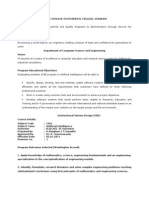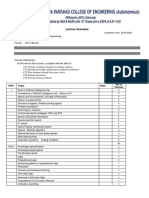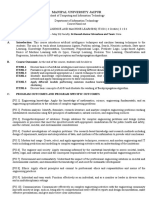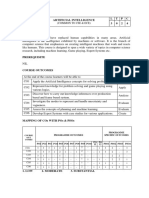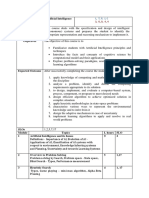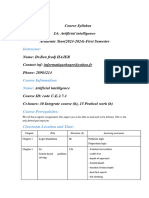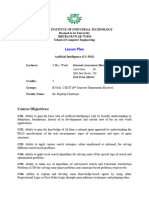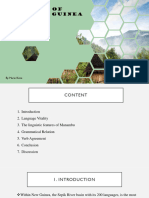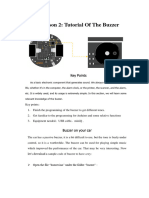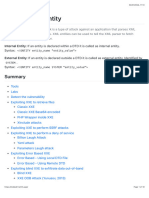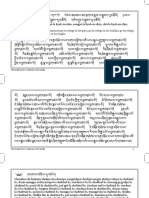0% found this document useful (0 votes)
29 views4 pagesCourse Handout
The course on Artificial Intelligence aims to establish a strong foundation in AI concepts, methods, and techniques for building intelligent systems. It covers topics such as intelligent agents, problem-solving, knowledge representation, planning, and learning, structured across five modules totaling 42 hours. The course also aligns specific learning outcomes with broader engineering program outcomes, emphasizing practical applications and ethical considerations.
Uploaded by
dikanedith.03Copyright
© © All Rights Reserved
We take content rights seriously. If you suspect this is your content, claim it here.
Available Formats
Download as PDF, TXT or read online on Scribd
0% found this document useful (0 votes)
29 views4 pagesCourse Handout
The course on Artificial Intelligence aims to establish a strong foundation in AI concepts, methods, and techniques for building intelligent systems. It covers topics such as intelligent agents, problem-solving, knowledge representation, planning, and learning, structured across five modules totaling 42 hours. The course also aligns specific learning outcomes with broader engineering program outcomes, emphasizing practical applications and ethical considerations.
Uploaded by
dikanedith.03Copyright
© © All Rights Reserved
We take content rights seriously. If you suspect this is your content, claim it here.
Available Formats
Download as PDF, TXT or read online on Scribd
/ 4




